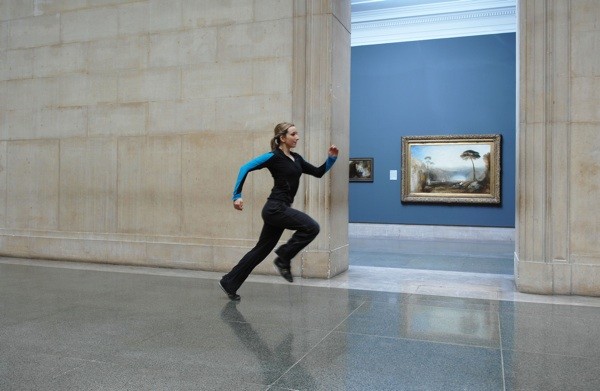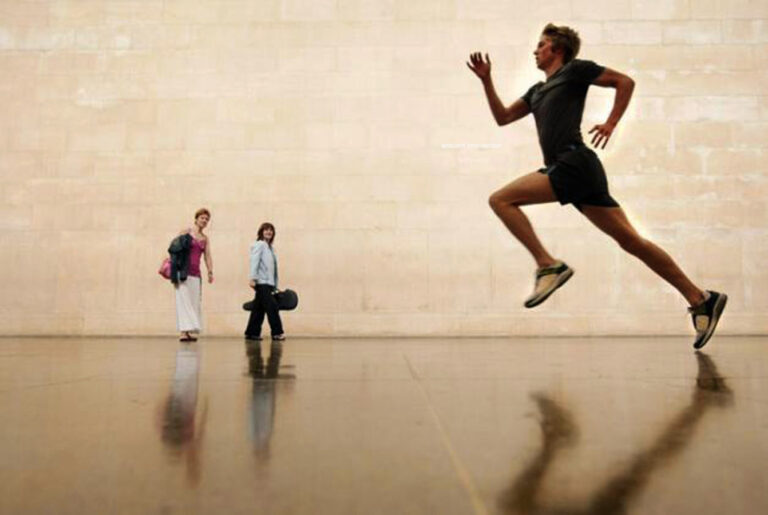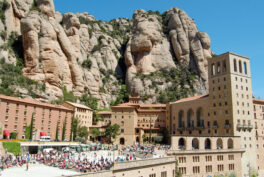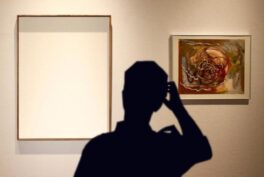Have you ever entered a museum five minutes before closing and thus had to run to see as much as possible? Such a thing happened to Martin Creed, a contemporary British artist, who once in Sicily had to run through the early Christian catacombs:
In Palermo we went to see the catacombs of the Capuchin monks. We were very late and only had five minutes to see it all before closing time. To do it we had to run. I remember running at top speed with my friends through the catacombs looking desperately left and right at all of the dead people hanging on the walls in their best clothes, trying our best to see it all… it was a good way to see it. It was that kind of delirious running which makes you laugh uncontrollably when you’re doing it. I think it’s good to see museums at high speed. It leaves time for other things.

This experience inspired Creed to question how we should behave in museums. Why is walking silently the advised way of viewing art? Maybe we could gain something new if we did things differently? Maybe movement of our bodies, our hearts pumping blood, are the artworks in their own rights? Creed’s Work No. 850 celebrates our physicality by presenting the beauty of human movement in its purest form. As he says:
Sometimes I feel very self-conscious – I’ve come to see a painting, now here I am, this is the experience of looking at art. Here, it’s important to me that there isn’t a cordon between you and the runner. People can just mill around. Art doesn’t have to be in a frame separate from you.
What is Work No. 850? Creed invited runners from different backgrounds from all over London and instructed them to sprint as if their lives depended on it. They had to run from one end of Tate gallery to another (86m), every 30 seconds, for four months. Each run was followed by an equivalent pause, ‘like a musical rest, during which the grand Neoclassical gallery is empty’.
Find out more:
[easyazon_image align=”none” height=”500″ identifier=”0500290814″ locale=”US” src=”https://www.dailyartmagazine.com/wp-content/uploads/2017/11/51Gq9ujCDOL.jpg” tag=”dailyartdaily-20″ width=”365″]




